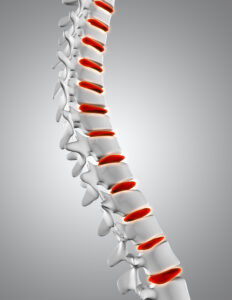Unlocking the Future of Spinal Health: A Comprehensive Guide to Spine Cages
Spine cages, also known as interbody cages or intervertebral cages, are important spinal implants used in spinal fusion, fixation, and reconstruction surgeries. Spinal cages help surgeons improve the spinal health of patients by providing structural support and stability to the spine while ensuring better bone fusion.
First introduced in the 1980s, spine cages have seen a continuous improvement in their functionality and efficacy owing to the rapid advancements in material science, technology, manufacturing methods, and surgical interventions, among others. Spine cages are not only revolutionizing spine surgeries but also helping us unlock the future of spine health.
In this guide, we will deep dive into the world of spine cages, its benefits, and advancements.
Spine Cages: Revolutionizing Spinal Health
Spine cages are spinal implants that are placed between adjacent vertebrae during spine surgeries to create a space that enables bone growth, facilitating spinal fusion and providing stability and support. It is widely used in surgical procedures aimed at treating back and neck pain, spinal deformities, trauma, degenerative disc diseases, and so on.
Spine cages, made of biocompatible materials like titanium or PEEK, are implants that contain a graft window, an anatomical structure, and a serrated profile. The graft window enables the bone graft to grow and fuse while the anatomically contoured structure helps in faster and accurate implantation.
The serrated profile with pyramidal teeth ensures that the spine cage is properly inserted and minimizes the risks of pull-out and implant migration. The use of biocompatible materials ensures that the implant has a longer life and does not interact with the body fluids or corrode.
Types of Spine Cages
Cervical Interbody Cages are designed specifically for the cervical spine and used to treat degenerative disc disease, herniated discs, or other spinal issues in the neck region.
Thoracic Interbody Cages are specially tailored for the thoracic spine and are used to treat spinal conditions, herniated discs, deformities, fractures, etc. in the middle segment of the spine.
Lumbar Interbody Cages are specially designed for the lumbar spine region and are widely used in addressing conditions like degenerative disc disease, spondylolisthesis, herniation, fractures, etc. in the lower back.
Expandable Interbody Cages are designed to be expandable, offering flexibility to surgeons during implantation and enabling them to adjust cage size during surgery.
Stand-alone Locking Cages for the Spine are designed to be used in specific spinal fusion procedures without any additional hardware such as spinal plates. Without the plate constructs, these cages ensure a reduced profile. These locking cages for the spine offer additional stability to the spine and minimize soft tissue disruption.
Porous, 3D-printed Spine Cages are developed using additive manufacturing techniques to allow for bone ingrowth, enhance fusion, and promote long-term stability.
In addition, spine cages are available in various configurations such as different heights, sizes, and shapes to suit the diverse needs of different procedures and patient anatomies.
Materials Used
The choice of materials used in crafting spinal cages has a direct impact on their mechanical, biological, and radiographic functions. Mechanically, the interbody cage must be strong enough to resist spinal loading while not too rigid that it prevents spinal fusion by causing excessive stiffness in the vertebral endplate.
Biologically, the spine cage must allow for seamless bone integration and enable accelerated fusion. It should also not react with bodily fluids or corrode. Radiographically, the interbody fusion cage must be radiolucent, enabling fusion visualization post-operatively with minimized ionizing radiation.
Owing to these reasons, titanium and PEEK are the two commonly used materials for spine cages.
Indications and Applications
Spine cages are used to treat the following conditions:
- Degenerative disc disease
- Spondylolisthesis
- Spinal tumors or masses
- Spinal stenosis
- Herniated disc
- Fractures caused by trauma or accidents
Implantation Techniques
Spine cages are implanted into the patient’s spine using the posterior (from the back), anterior (from the front), and lateral (from the side) approaches. Surgeons will perform either open or minimally invasive surgeries to implant the interbody cage.
Manufacturers provide spine cages with instrument kits to help surgeons seamlessly remove the herniated/ fractured/ deformed portion of the spine and implant the interbody cage in that space.
The Benefits of Spinal Cages
Spinal cages enable surgeons to restore spinal health in patients, provide relief from back and neck pain, and improve their overall quality of life. Here are the specific benefits of interbody fusion cages:
- Facilitates spinal fusion and improves the stability and balance of the treated vertebral section
- Enables the restoration of disc height to the height of the original intervertebral disc
- Address disc herniations, fractures, spinal deformities, spinal tumors, etc., and improve spinal health
- Ensure greater space for nerve roots and relieve pressure on the spinal nerves by expanding the bony openings between vertebrae
- Enable the restoration of the natural curve of the spine
- Allow the transfer of spinal loads from the upper to lower segments of the spine
- Promote effective bone growth and fusion
Advancements in Spinal Cages
Spine cages have been evolving right from the 1980s when they were first introduced but have advanced at an accelerated pace in the past few years. Everything from the cage design and materials used to the surgical instruments used and production methods have evolved to improve the surgical outcomes, reduce post-operative pain, and accelerate patient recovery.
Some of the key advancements include:
- The use of rapid prototyping, additive manufacturing including 3D printing, the latest imaging tools, CAD software, and precision machining help in the manufacturing of precise, effective, and OR-ready spine cages.
- With the help of 3D printing technology, surgeons are able to personalize implant solutions to develop spine cages that perfectly fit the patient’s anatomy. This is particularly useful in cases where the patient has a unique anatomy or spinal condition to be treated.
- The emergence of minimally invasive surgeries (MIS) and advanced spine cages with instrument kits have enabled surgeons to precisely implant cages with smaller incisions while reducing soft tissue trauma and postoperative pain and speeding up recovery times for patients.
- With a deeper understanding of biomechanics and the uses of varied testing, surgeons and engineers are able to develop spine cages that are stable and durable with improved load-bearing capacity. This reduces the need for revision surgeries with a lower risk of implant failure and displacement.
Looking for Premium-Quality Spine Cages?
Look no further! Gesco, a renowned medical device company, offers a range of premium-quality spine cages in diverse configurations. Developed by seasoned experts in close collaboration with medical professionals, our spine cages offer unmatched precision, performance, and quality.
Want to take a look at our range of spine cages now? Visit our website now!



